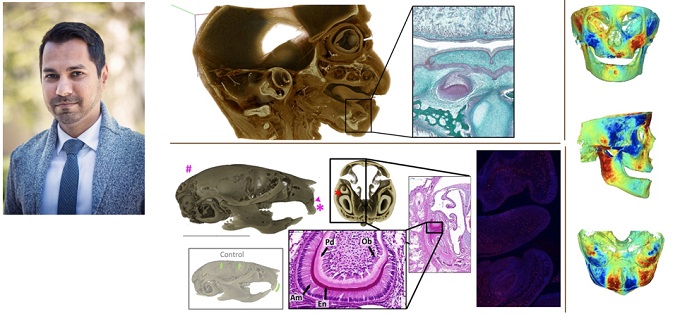Dr. Vora’s Research

Growth and development of craniofacial and dental tissues occurs via a sequence of complex cellular interactions that are controlled by a myriad of genetic, epigenetic and molecular events. Our research focuses on different aspects of normal and abnormal craniofacial and dental development; ranging from morphological analysis of growth and asymmetries, molecular events involved in tooth shape and structure, to outcomes-based clinical assessment of surgical outcomes.
Human Fetal Craniofaical Development:
We are investigating morphogenic events that define craniofacial and dental growth at human fetal stage (second trimester), when the head form is being established. We are utilizing a rare and unique collection of well-preserved human fetal specimens subjected to high-resolution 3D imaging and comprehensive geometric morphometrics. Contrast-enhancement is allowing for the visualization and 3D analysis of various soft-tissue structures not visible with ordinary imaging, to uncover early ontogeny of the craniofacial region.
Molecular Control of Odontogenesis:
We are investigating the role of colony stimulating factor-1 ligand and receptor during tooth development. Inhibition of this receptor results in significant abnormalities during tooth formation beginning around the tooth germ initiation stage. We are utilizing genetic and pharmacological mouse models as well as ex vivo organ cultures to elucidate the unexpected role of these immune-response molecules during tooth developmental.
Evaluation of cleft-lip treatment outcomes:
A clinical research focus involves the assessment of functional and esthetic outcomes of presurgical nasoalveolar moulding in patients born with a cleft-lip, who have subsequently undergone surgical repair. This project is being carried out in conjunction with the craniofacial team at BC Children’s Hospital and utilizes advanced 3D imaging, geometric morphometrics and deformation-based shape analyses to reveal areas of global and local asymmetry in surgically treated individuals. This longitudinal clinical study and will reveal changes in facial morphology with growth, the outcomes of which will help guide appropriate surgical and presurgical clinical protocols.